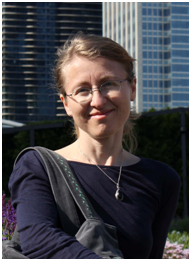
Pictorial hagiographic narrative plays one of the key roles in the medieval Christian imagination and didactics. Analysis of pictorial cycles is, however, traditionally focused just on following the extent of their connections to textual models. The prevailing view is that the pictorial legend can simply be ʻreadʼ as a story, like some kind of medieval comics. What precisely ʻreadingʼ this kind of pictorial narrative means has been the subject of debate for more than two decades. As recent research interest shows, it is far from being the simple and straightforward process it appears to be at first sight. Elisabeth Sears, for example, understands ʻreadingʼ as an ʻinterpretation from a certain perspectiveʼ, while in her view ʻreadingʼ more suitably includes the eye working together with the mind. Focusing on Vita Antichristi pictorial cycle in the Velislav Bible I will argue that interpretation is based on a detailed analysis of the work within the given functional and contextual framework, and on the understanding of its pictorial conventions within the given genre.
Event detail
- Event start
- 8. 3. 2017 17:30 - 19:00
- Venue
- nám. Jana Palacha 2, Praha 1 (room 301)
- Website
- css.ff.cuni.cz/cs/medieval-conceptual-conflicts-and-contrasts-text-and-image/
- Organizing Institution
- Centre for the Study of the Middle Ages in cooperation with the Department of English Language and ELT Methodology
- Event type
- Lecture




